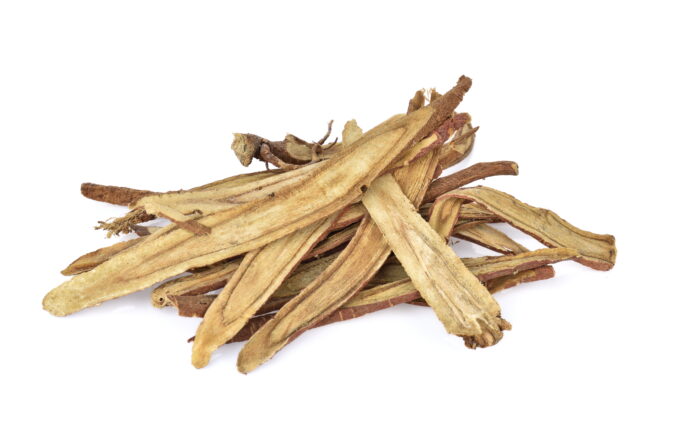
Helps Damaged Tissue, Muscle Hypertonicity, Spasms, And Acute Pain
By Daniel Cho, L.Ac
*Gan Cao: Symptom Indicator Score-, Frequency of Use +++
-Possible Symptoms: ①Hypertonicity of skeletal muscles and hypertonicity and pain of abdominal muscles. ②Throat pain and sores due to damage to throat membranes.
-TIP: ③Gan Cao’s clinical signs are hard to find.
- Pharmacological Hypothesis of Gan Cao
- Gan Cao replenishes and prevents rapid loss of body fluid; : With its steroid-like effect, the herb retains water. Therefore, excessive consumption of Gan Cao can induce edema. Excessive consumption of glycyrrhizic acid, which is the main ingredient of Gan Cao, can cause hypoaldosteronism, along with hypokalemia, hypertension, edema, and in addition, muscle weakness.
- Formulas that expel water from our body are usually used as powders, without Gan Cao.
- Formulas that strongly expel water from our body, such as ones that induce sweating or diarrhea, often contain Gan Cao to compensate for the rapid loss of body fluid.
- Gan Cao is sometimes included in formulas that supply body fluid to certain areas of our body.
- Gan Cao repairs damaged membranes
: Gan Cao seems to repair various membrane damages such as throat pain due to damaged respiratory membranes, stomatitis from damaged oral membranes, stomach ulcer from damaged stomach membranes, and damage of membranes in the eyes.
- Gan Cao treats muscle hypertonicity, spasms, and acute pain caused by loss of body fluid in skeletal and smooth muscles.
Muscle cells take up 75% of total body cell volume. This means most of the intracellular fluid, which takes up 2/3 of the total body fluid, is included in muscle cells. Therefore, muscles work as storage tanks for body fluids. If body fluid in muscles is lost, muscles and fascia become rigid, resulting in spasms, stiffness and pain. Gan Cao can relieve this process by quickly supplying body fluid to skeletal muscles as well as smooth muscles of organs. Gan Cao can heal stomach pain by relieving the hypertonicity of visceral smooth muscles in the stomach and can also help treat cough by relieving the hypertonicity of bronchial smooth muscles.
- Clinical Signs of Gan Cao
Gan Cao’s symptom indicator score is very low, which means its clinical signs are oblivious and hard to find. This is why in clinical practice we do not look for clinical signs of Gan Cao.
Gan Gao’s therapeutic effects are as follows:
①Gan Cao swiftly supplies body fluid to localized target areas.
As such, Gan Cao treats hypertonicity of skeletal muscles, as well as hypertoniciy and pain of abdominal muscles.
②Gan Gao restores damages to the membranes of throat, mouth, and stomach
Example) Gan Cao Tang (Gan Cao): Gan Cao treats throat pain, mouth sores and such by restoring damage to the membranes of throat and mouth.
③Gan Cao prevents rapid loss of body fluid, and therefore is included in formulas that expel or dry body fluid.
- Cautions
We should take care when using Gan Cao for patients who easily swell. In clinical practice, we often encounter side effects of using too much Gan Cao, manifested as edema. This is why Gan Cao is not included in formulas that aim to expel excessive water from our bodies.
If patients complain of swelling while consuming Gan Cao formulas, we can suspect Gan Cao as the main culprit. This is especially true when Gan Cao is used in large amounts or as the main ingredient. But suppose the formula is indeed the right choice for the patient. In that case, we can keep prescribing the formula with a decreased amount of Gan Cao, or we can temporarily stop the Gan Cao formula and switch to Wu Ling San (Fu Ling, Zhu Ling, Bai Zhu, Ze Xie, Gui Zhi), which will expel water, and then continue with the Gan Cao formula again.
































